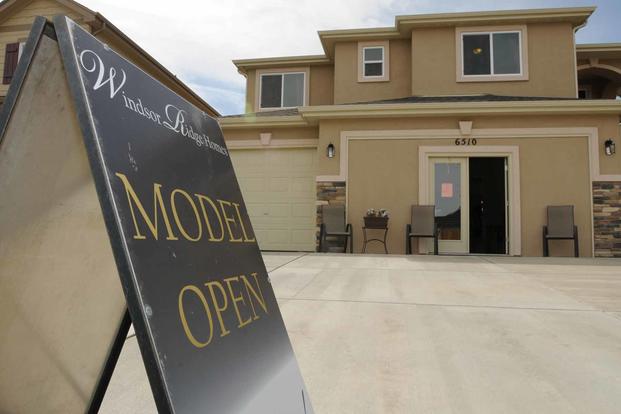Following 6 easy steps to a VA mortgage can prevent slipups and delays. Learn the DOS and DON’TS of the second step: obtaining your COE.
COE stands for Certificate of Eligibility. It’s a document generated by the Department of Veterans Affairs that tells your VA-approved lender if you meet certain requirements for home loan benefits based on your military service. It also contains important information that can help your loan officer calculate your entitlement (how much the VA will guarantee for you) and fees (costs associated with the loan).
If you’ve served in one of the seven uniformed services, or are a surviving spouse, you may have earned home loan benefits. Obtaining your COE will help you know for sure.
To help you obtain this important document, here are some “do’s” and “don’t’s” to consider at this second step in the VA loan process.
1. Do ask your lender for help.
Common delays may be prevented if you go straight to your VA-approved lender to get your COE. Most approved lenders have access to the VA online system and can print most COEs on the spot in a matter of seconds. Not all COEs can be obtained this way, but many can. If your document cannot be obtained instantly, it’s still a very good idea to enlist your lender’s help in obtaining it another way.
2. Do familiarize yourself with the three ways to get it.
There are three ways to get your COE.
- VA eBenefits Portal via the Internet
- Atlanta Regional Loan Center by U.S. mail
- VA Online Portal through your VA-approved lender
No matter how you get it, your COE is a vital part of the VA loan process. With some methods above it can take just a few minutes to obtain! And the good news is that unless you originally applied for your COE while on active duty, it never expires. If your COE was obtained while on active duty, you’ll need to get another one after discharge. Surviving spouses may only use option #2.
3. Do learn the basics of VA loan eligibility.
Here’s the bottom line: your COE shows VA eligibility for home loan benefits. To be clear, just because you’re eligible doesn’t mean you qualify. Once you prove VA eligibility to a lender, then they will still need to determine if you qualify for a VA home loan.
Your eligibility is based on the Department of Veterans Affairs’ service guidelines. You may be eligible if you’ve served:
- 2 years on Active Duty
- 6 years in the Reserve/National Guard
- 90 days of Wartime Duty (called up Under U.S.C. Title 10)
- 181 Days of Peacetime Duty (called up under U.S.C. Title 10)
(Complete eligibility requirements can be found at www.va.gov).
Eligibility is also extended to certain veterans discharged honorably from active duty for service-connected injuries or other reasons outlined by the VA.
Additionally, many surviving spouses may also be eligible. Eligibility requirements have recently been extended to include more surviving spouses. If you weren’t eligible in the past, your status may have changed due to new extended rules. Read more about surviving spouse eligibility.
4. Don’t try to make sense of your COE without help.
Your COE contains alphanumeric codes and other information that your licensed VA loan officer is trained to decipher. Unfortunately, some potential borrowers try to interpret their COE on their own and misinterpret their loan entitlement. A common mistake is seeing a zero on the form and thinking there’s no entitlement available.
“Just because your COE says $0 basic entitlement doesn’t automatically mean you have no entitlement,” shares Retired Major Tim Lewis, 23-year Army veteran and customer experience manager for iFreedom Direct®, referring to an option called Tier Two Entitlement. Tier Two enables qualified borrowers to tap into additional entitlement to purchase a home over a certain dollar amount.
It makes good sense to take advantage of the expertise of a Regional VA Loan Center representative or an experienced VA loan professional, as entitlement calculations can be confusing.
5. Don’t forget proof of service.
Proof of service should accompany your COE application. The VA provides some pretty clear direction on which forms can serve as proof. For instance, if you received DD Form 214 when you were discharged, then you’ll need to dig it out. If you’re still serving regular active duty, you’ll need an original statement of service signed by, or by direction of, the adjutant, personnel officer, or commander of your unit or higher headquarters. It must show your date of entry and period ordered for current active duty and how much, if any, time lost.
No single form like the DD 214 exists for Reserves or National Guard. Reservists and National Guard members need copies of adequate documentation of at least 6 years of honorable service. For Army or Air Force National Guard, you may submit NGB Form 22, Report of Separation and Record of Service, or NGB Form 23, Retirement Points Accounting.
If you were discharged from the Selected Reserve, you may submit a copy of your latest annual points statement and evidence of honorable service. Reservists and Guard members still serving must have an original statement of service showing length of service like the one used by those still serving regular active duty.
6. Don’t use the wrong form.
You may have been told you need to fill out VA Form 26-1880 in order to obtain your COE. Fact is, not everyone uses this form. Veterans, active duty, Reservists and National Guard members may be asked to fill out this form 26-1880. However, surviving spouses use a different form — VA Form 26-1817. But don’t worry! Your VA-approved lender can help make sense of all the forms you need to complete the VA loan process.
Next Step: If you’ve earned home loan benefits, crossing the COE off your list can get you one step closer to becoming a homeowner. Click here to contact a VA loan specialist today and get the process started.
Ready to Shop for a New Home?
The first step in the VA loan process is to shop around for a lender. We make the process easy by matching you with up to five lenders for rate quotes - no obligations or credit checks required.











